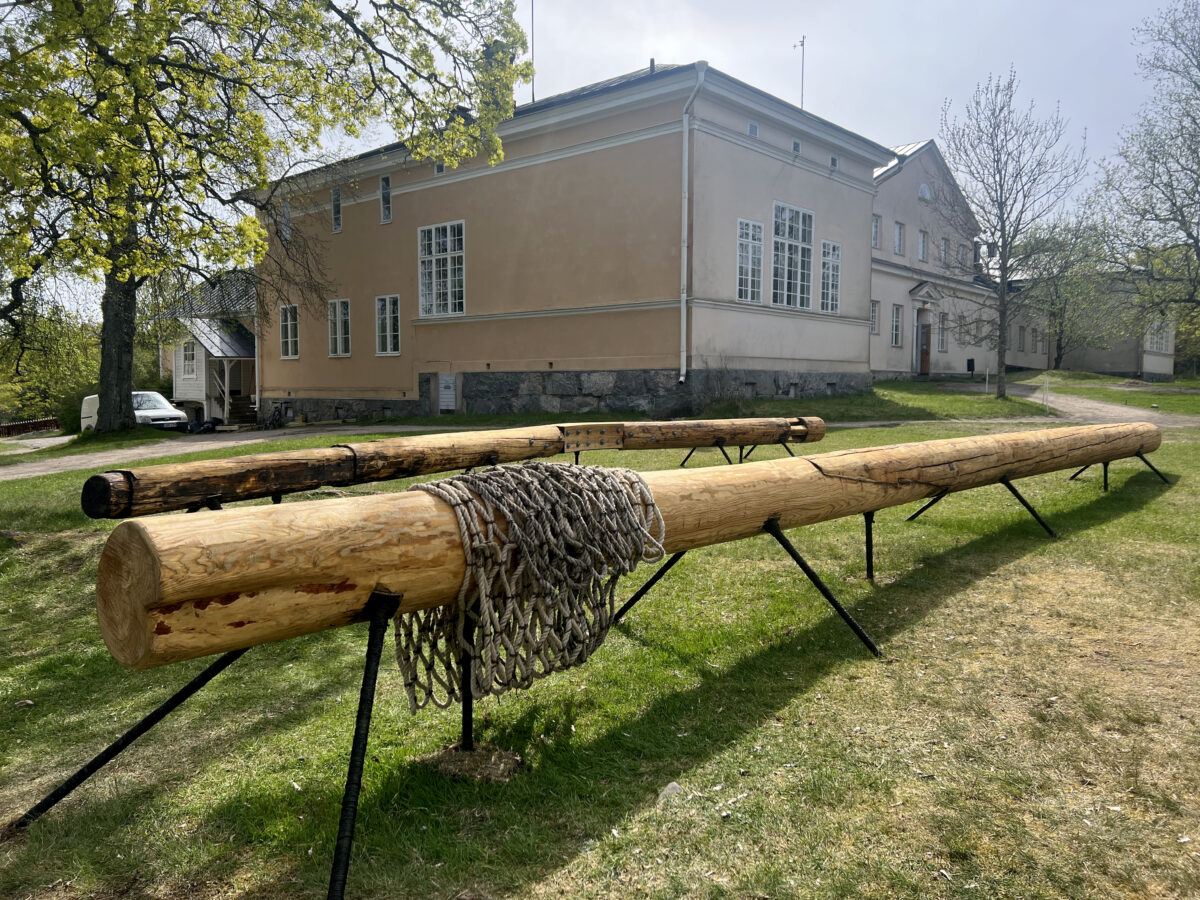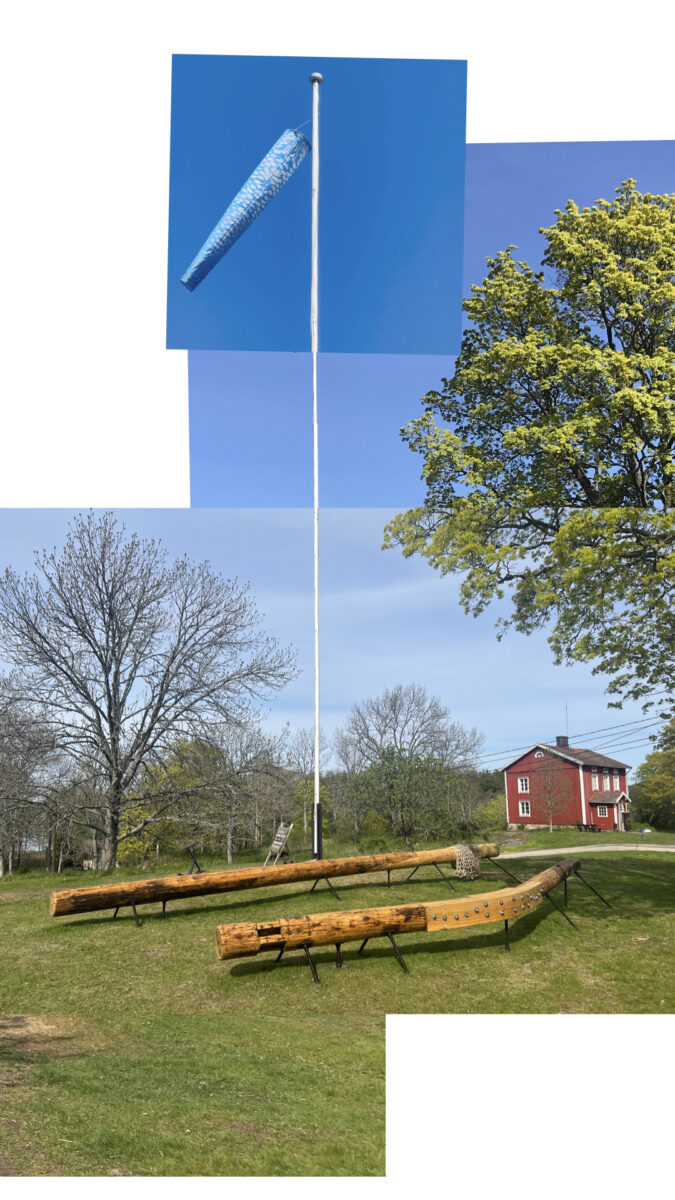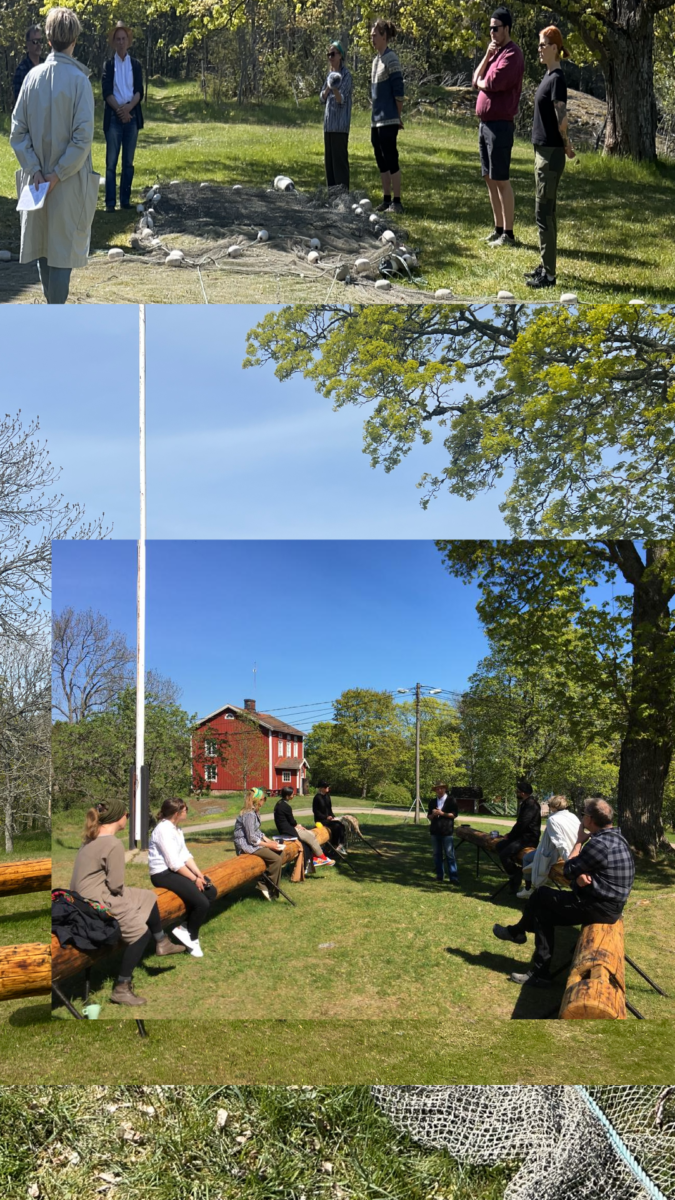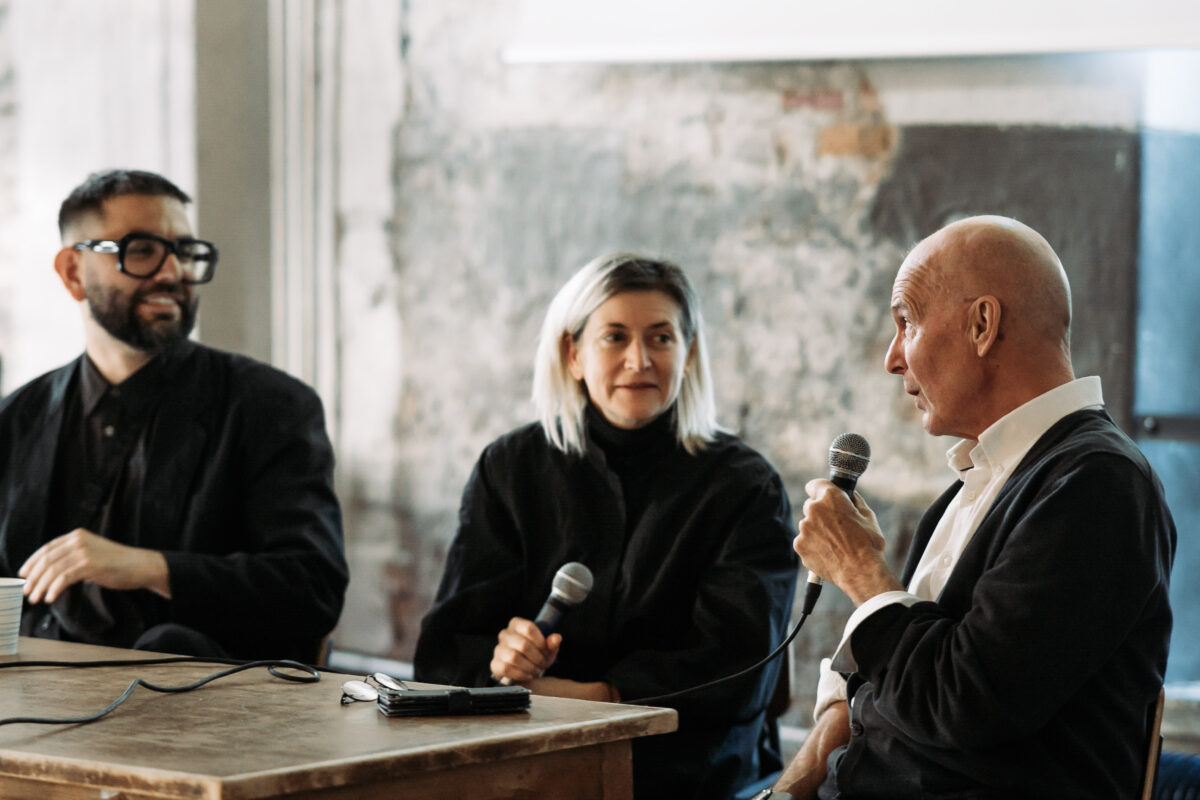FRAUD:
Fields of May
FRAUD’s (Audrey Samson and Francisco Gallardo) Fields of May, commissioned by CAA, expands upon the Midsummer Mast project in which the artists reconfigured the former masts of the museum ship Sigyn into a pre-modern, summer-solstice maypole in Fiskars (2020) and Turku (2021) respectively. FRAUD describe Fields of May not as a singular artwork but as “an infrastructure converging practices and historical-material specificity which create the conditions of possibility to conjure worlds attuned to non-extractive rhythms.”
In Fields of May, the masts that were once pillars of power for ships like the Sigyn, and then repurposed for Midsummer Mast, have been laid to rest as support structures – a seating area outside the Archipelago Research Institute buildings in Seili – for dialogue on multi-scalar and multi-species issues concerning climate change. In addition to the in-situ installation, FRAUD have produced the Fields of May website, an interactive and public platform which documents and shares the ongoing multidisciplinary conversations surrounding the work.
The artists explain how Fields of May “put[s] notions of tradition and salvaging into discussion,” and “denounce[s] how modernity was posited in contradistinction with tradition, enabling modernity to mobilise a fiction that defined socio-economic order and particular modes of subjectivities.” They reflect that Fields of May “propose[s] salvaging as a way to question and re-claim the meaning of traditions” and call upon Katriina Siivonen’s writing on the concept of ‘heritage futures’ as a departure from cultural heritage. Instead of the latter’s focus on preserving, ‘heritage futures’ develops rituals for ecological survival.
FRAUD’s repurposing of the Sigyn‘s masts from maypole to tools for chairing conversation reactivates an assemblage of traditions for change-making in the present day. Fields of May draws upon archipelagic histories in which maypoles were bound to the liberalisation of maritime trade. There is also a reference to the use of maypoles in England in tribunals where governors, barons and kings were deposed and punished if ruled guilty. The title, Fields of May, comes directly from the fact that may poles were hoisted in meadows known as the ‘Ey-commons’ or ‘Fields of May’ – the latter being the highest court in popular law, and now known as the ‘commons law’.
As part of the commission, and in-line with the juridical traditions associated with the may pole, a Witness Seminar was held in May 2022. Following their permanent installation on Seili, the masts-turned-chairs provided an infrastructure for discourse on the complex materialities of the Baltic Sea. During the seminar, participants were invited to share their own situated knowledges and experiences, and to openly converse about the potentiality of more-than-human legal ecologies and to ask, “could we re-imagine law to advocate and nurture multi-species legal ecologies?” FRAUD disseminate the research and conversations held at the Witness Seminar and throughout the wider Fields of May project via the Fields of May website. This opens the discourse to publics existing beyond the island of Seili.
Fields of May would not be complete without its Baltic herring windsock which, when raised on the Institute’s flagpole, acts as an indicator of wind speed and direction but also as a call to action in these uncertain times. The windsock foregrounds our Baltic kin, their changing habitats and the urgency with which we need to collectively discuss and devise alternative rituals for multi-species, ecological survival. When visiting the Fields of May website, your cursor is guided playfully guided by the motif of a plankton and a herring – once again, bringing these essential Baltic agents to the fore.
FRAUD presented Fields of May at CAA x NPT How do you know what you know? Exercises in Attentiveness II in September 2022.
Visit the Fields of May website
Find out about Midsummer Mast in Fiskars
Read about Midsummer Mast in Turku
Fields of May is commissioned by CAA as part of Spectres in Change, funded by Kone Foundation. In addition, the commission has received funding from Acción Cultural Española and Canada Council for the Arts. Fields of May was inaugurated in May 2022 in Seili as part of an exhibition and a public programme in collaboration with the Archipelago Research Institute.




